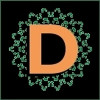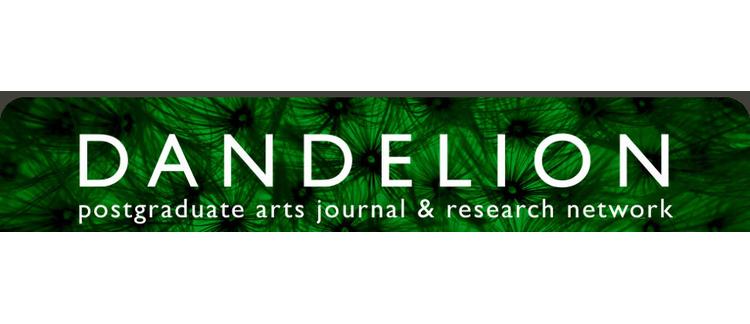Conference Review
'Bharat Britain: South Asians Making Britain 1870-1950',
British Library, 13-14 September, 2010
Soofia Siddique
The conference 'Bharat Britain: South Asians Making Britain 1870–1950' was a culmination of a three-year interdisciplinary and inter-institutional project 'Making Britain: South Asian Visions of Home and Abroad, 1870–1950' (2007–10) led by Susheila Nasta, Professor of Modern Literature at the Open University.1 The stated aim of this major conference was to bring together leading scholars, writers, and curators to map the diverse and little-known impact of South Asians on Britain's cultural, political, intellectual, and religious life during this period. Spread over two days across ten presentation panels, three keynotes, two conversation panels, and a concluding roundtable discussion, the conference presented the work and engagements of close to forty scholars and other personalities on this theme.
The pioneering works of Rozina Visram on the centuries-old history of South Asian presences in Britain formed a kind of keystone to the conference, as various speakers referenced her contributions.2 Visram, a consultant to the 'Making Britain' project, spoke in a keynote session about her engagement as a history teacher, and subsequently as an independent researcher, with this silenced aspect of British history, expressing the problematic depiction of British history as an 'island story'. Elaborating on the same theme of silences and gaps in dominant accounts Susheila Nasta employed the metaphor of 'shifting the furniture' and spoke about how the project at times revealed concealed elements and aspects for which the researchers had been unprepared.
In the opening talk, Nayantara Sahgal, writer and niece of Jawaharlal Nehru, using an evocative formulation spoke of the 'importance of strangers' in the lives of persons and nations, and drew attention to the two-way traffic of influence that transformed both parties in the colonial encounter. Using her own family's evolving history as frontline participants in India's freedom struggle, she reminisced about the Nehrus' amalgamation of patriotic pride and anti-colonial investment with an embracing of the English lifestyle and cultural products. She raised a key question: when a single person is a product of two cultures, where does one culture end and the other begin? In relation to this question she underlined the theme of inextricable involvement, while later in her talk she also evoked the idea of a choice between different selfhoods. Together these two strains introduced the rich dialectic of amalgamation and divide which marks Indian modernities as well as South Asian histories in Britain, and provided an effective keynote to several engagements of the conference.
Antoinette Burton of the University of Illinois at Urbana-Champaign, in her keynote 'Brown, Black and British', placed Visram's revisionary work in the broader context of the writing and publication of alternative postcolonial histories, particularly in the 1980s, and drew attention to the proposed new history curriculum for British schools under the consciously Eurocentric ideological stewardship of Niall Ferguson. She also emphasized the importance of life stories in prising open larger and shadowed aspects of cultural and political formations, a point well illustrated by the preponderance of personal narratives in the conference, both in the form of narratives about the speakers, and in papers focussing on individual South Asian personalities in Britain—princes, poets, soldiers, etc. The focus on documented, individual lives of wealthy and well-placed South Asians in Britain (generally written in English) also led to a voicing of the concern that the conference risked becoming a neo-orientalist celebration of elite exotica.
A number of papers dealt with the phenomenon of colonial women visitors to the imperial metropolis playing to/with the gallery of imperial expectations of the exotic feminine. Among these were Chandani Lokuge's analysis of the fiction of Cornelia Sorabji and the poetry of Sarojini Naidu, and Shompa Lahiri's exploration, through the figure of the Anglo-Indian Olive Christian Malvery, of multiple ways of staging 'nativeness'. Several presentations focussed on the encounters of well-known or elite Indian writers with England: Naidu, Toru Dutt, Alice Sorabji Pennell, and Rabindranath Tagore. At the same time, three papers on the history of lascars in Britain seemed to indicate the engagement with the other end of the social spectrum covered by the conference.
The theme of racial mixing in Britain was treated in an impressively documented paper by Rehana Ahmed. Drawing on archival sources, she explored the perception and construction of mixed-race relationships and children in 1930s and 1940s Britain. Delving into liberal and philanthropic discourses the paper argued that these essentially betrayed a fear of racial intermixing, and highlighted the paradoxical combination of advocacy of integration and unease with mixed-race relationships in such discourses.
A panel on South Asian soldiers in the First and Second World Wars brought to light new sources documenting this presence, generally blotted out in the grand narratives of Britain's war experience. Santanu Das presented a fascinating paper using a variety of records to reconstruct the contemporary British perception of the thousands of Indian combatants who fought for Britain during the First World War, as well as the experiential and affective dimensions of the Indian sepoys' encounter with Europe. Florian Stadtler's paper dealt with the presence of South Asian soldiers in Britain from 1940 to 1943, and drawing attention to this unremembered though well-documented presence, raised questions about the production of historical narratives and issues of memorialization in the present. While both these papers employed the individual life story in their procedures, they seemed to suggest the possibilities of the life story as not only an object, but as a mode of recovery.
Two presentations were specifically concerned with Islam in Britain. Ron Geaves in his paper 'Creating a National Muslim Presence in Britain, 1883–1907' recounted the life and activities of Abdullah Quilliam, a nineteenth-century English convert to Islam, and founder of England's first mosque and Islamic centre in 1889. While the paper essentially focussed on the formation of an early Muslim community in Liverpool, composed of English converts, lascars, and some other South Asian individuals around the efforts of Quilliam, it acknowledged the largely strained relationship between Quilliam and Muslims in India, Quilliam's advocacy of global pan-Islamism having found little favour with the latter. In a keynote talk, Humayun Ansari, Professor of Islam and Cultural Diversity at Royal Holloway, traced the development of the East London Mosque (ELM) from the 1940s as an institutional locus for identity formation in the area, often through a history of social and racial conflict, resulting in a highly separated social sphere for many South Asian Muslims. In the following discussion, questions were raised about the role and ideological place of other mosques in the area, the political hegemony of the ELM, and its possible resistance to alternative South Asian voices within its neighbourhood.
In the above discussion as in others, the sessions appeared to benefit from the presence of informed activists and grassroots workers, and as the conference unfolded the dialectics generated were not limited to South Asia-Britain or White-Brown, but panned out into those of Theory-Practice, Higher Academia-Larger Society, and Historians-Activists. The distinctly interdisciplinary aspect of the conference was underlined through the valuable contributions of poet Meena Alexander, film-maker Mukti Jain Campion, curator Dominiek Dendooven, writer and media personality Meera Syal, and art historian Sarah Turner, among others.
Among some of the significant issues raised through the conference were those revolving around the hidden or subterranean hierarchies entrenched in the adjuncts of higher academia, one of these being the British bookshop which classifies and shelves works such as Visram's as 'Anthropology' rather than 'British History', and another being the British secondary school which at best offers Indian languages such as Gujarati as 'heritage languages' rather than 'modern languages' on a par with French or German.
The conference also marked the launch of an online interactive database providing over five hundred entries on South Asians, their British colleagues, organizations, and events in Britain in the period from 1870 to 1950, and of a panel exhibition that will tour parts of the United Kingdom and India in the coming year, providing an indication of just a few of the ongoing outreach activities that have emerged from the 'Making Britain' project.3 The conference itself successfully demonstrated the scope for substantive academic research as well as informed civic engagement in the areas it uncovered, and raised searching questions about the class, race, language, and religious aspects of the historical presence of South Asians in Britain.
SOAS, University of London
Notes
1. More information at
http://www.open.ac.uk/Arts/south-asians-making-britain/conference.htm> [accessed 2 January
2011].
2. Rozina Visram, Ayahs, Lascars and
Princes: Indians in Britain, 1700–1947 (London: Pluto Press,
1986); Asians
in Britain: 400 Years of History (London: Pluto Press, 2002).
3. 'Making Britain:
South Asian Visions of Home and Abroad, 1870–1950', http://www.open.ac.uk/makingbritain/> [accessed 2 January
2011].


Comments on this article
-
http://www.pay-dayz.co.uk Make sure to begin doing enough analyze just for personal loans
View all commentsby 33 akzeniust akzeniust akzeniustazer (2013-01-13)